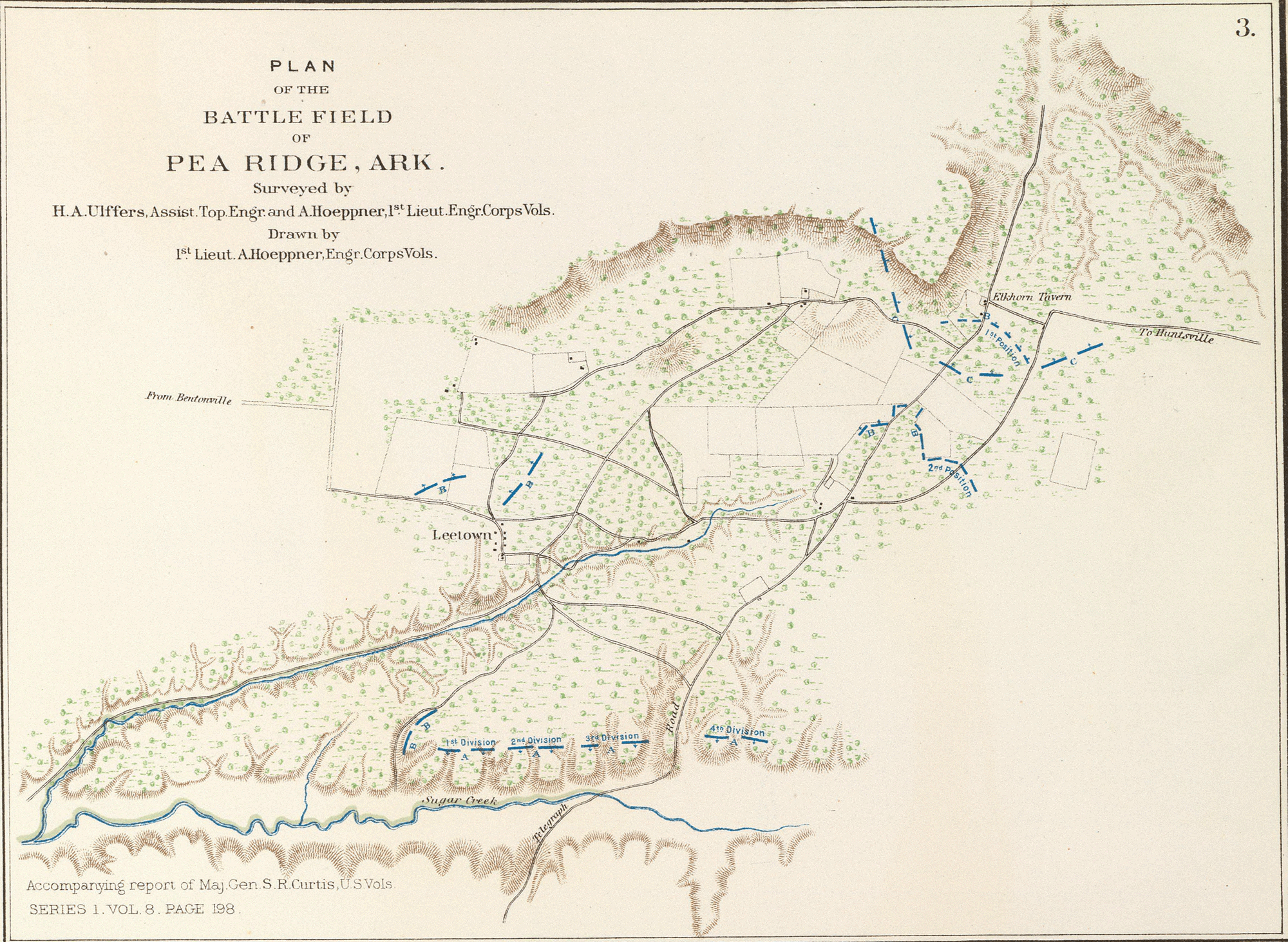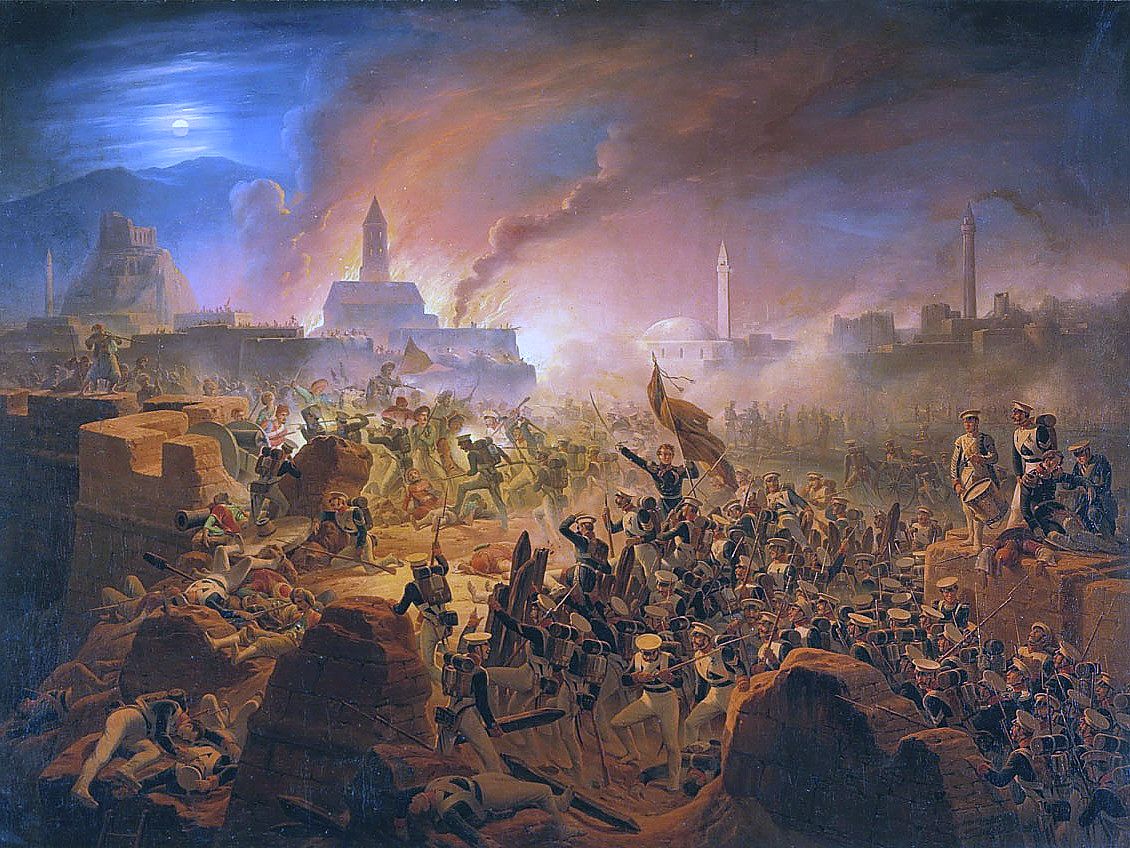|
Theodore A. Switzler
Theodore A. Switzler (March 3, 1828 – January 21, 1879) was an American Union brevet brigadier general during the period of the American Civil War. He received his appointment as brevet brigadier general dated to March 13, 1865. Switzler began his military career by organizing a company of the Dade County Home Guards and serving as their captain. He participated in the Battle of Wilson's Creek on August 10, 1861. After this battle, his company was combined with other units to form the 6th Missouri Volunteer Cavalry. On March 6, 1862, he was wounded in the neck by a small bullet at Sugar Creek, Arkansas, just before fighting in the Battle of Pea Ridge. Immediately afterwards on March 9, 1862, Switzler was promoted to the rank of major. On August 13, 1862, he was promoted to lieutenant colonel. Switzler also fought in the Battle of Prairie Grove, the Vicksburg campaign The Vicksburg campaigns were a series of maneuvers and battles in the Western Theater of the ... [...More Info...] [...Related Items...] OR: [Wikipedia] [Google] [Baidu] |
Union (American Civil War)
The Union was the central government of the United States during the American Civil War. Its civilian and military forces resisted the Confederate State of America, Confederacy's attempt to Secession in the United States, secede following the 1860 United States presidential election, election of Abraham Lincoln as president of the United States. Presidency of Abraham Lincoln, Lincoln's administration asserted the permanency of the federal government of the United States, federal government and the continuity of the Constitution of the United States, United States Constitution. Nineteenth-century Americans commonly used the term Union to mean either the federal government of the United States or the unity of the states within the Federalism in the United States, federal constitutional framework. The Union can also refer to the people or territory of the states that remained loyal to the national government during the war. The loyal states are also known as the North, although fou ... [...More Info...] [...Related Items...] OR: [Wikipedia] [Google] [Baidu] |
Brevet (military)
In military terminology, a brevet ( or ) is a warrant which gives commissioned officers a higher military rank as a reward without necessarily conferring the authority and privileges granted by that rank. The promotion would be noted in the officer's title (for example, "Bvt. Maj. Gen. Joshua L. Chamberlain" or "Bvt. Col. Arthur MacArthur"). It is not to be confused with a '' Brevet d'état-major'' in Francophone European military circles, where it is an award, nor should it be confused with temporary commissions. France In France, ''brevet'' is a word with a very broad meaning, which includes every document giving a capacity to a person. For instance, the various military speciality courses, such as military parachutism, are ended by the award of a brevet. The more important brevet in the French military is that of the École de guerre (''lit''. "school of war"), the French Staff College. Between 1870 and 1940, an ''officier breveté'' was a graduate of the ''École ... [...More Info...] [...Related Items...] OR: [Wikipedia] [Google] [Baidu] |
American Civil War
The American Civil War (April 12, 1861May 26, 1865; also known by Names of the American Civil War, other names) was a civil war in the United States between the Union (American Civil War), Union ("the North") and the Confederate States of America, Confederacy ("the South"), which was formed in 1861 by U.S. state, states that had Secession in the United States, seceded from the Union. The Origins of the American Civil War, central conflict leading to war was a dispute over whether Slavery in the United States, slavery should be permitted to expand into the western territories, leading to more slave states, or be prohibited from doing so, which many believed would place slavery on a course of ultimate extinction. Timeline of events leading to the American Civil War, Decades of controversy over slavery came to a head when Abraham Lincoln, who opposed slavery's expansion, won the 1860 presidential election. Seven Southern slave states responded to Lincoln's victory by seceding f ... [...More Info...] [...Related Items...] OR: [Wikipedia] [Google] [Baidu] |
Dade County, Missouri
Dade County is a county located in the southwest part of the U.S. state of Missouri. As of the 2020 census, the population was 7,569. Its county seat is Greenfield. The county was organized in 1841 and named after Major Francis L. Dade of Virginia, who was killed in the Second Seminole War in 1835. Geography According to the U.S. Census Bureau, the county has a total area of , of which is land and (3.2%) is water. Adjacent counties * Cedar County (north) * Polk County (northeast) * Greene County (southeast) * Lawrence County (south) * Jasper County (southwest) * Barton County (west) Major highways * U.S. Route 160 * Route 39 * Route 97 Demographics As of the census of 2000, there were 7,923 people, 3,202 households, and 2,276 families residing in the county. The population density was . There were 3,758 housing units at an average density of . The racial makeup of the county was 97.45% White, 0.27% Black or African American, 0.71% Native American, 0.14% Asian ... [...More Info...] [...Related Items...] OR: [Wikipedia] [Google] [Baidu] |
Battle Of Wilson's Creek
The Battle of Wilson's Creek, also known as the Battle of Oak Hills, was the first major battle of the Trans-Mississippi Theater of the American Civil War. It was fought on August 10, 1861, near Springfield, Missouri. In August, Confederates under Brigadier General Benjamin McCulloch and Missouri State Guard troops under Maj. Gen. Sterling Price approached Brig. Gen. Nathaniel Lyon's Army of the West, camped at Springfield. On August 10, Lyon, in two columns commanded by himself and Col. Franz Sigel, attacked the Confederates on Wilson Creek about southwest of Springfield. Confederate cavalry received the first blow and retreated from the high ground. Confederate infantry attacked the Union forces three times during the day but failed to break through. Eventually, Sigel's column was driven back to Springfield, allowing the Confederates to consolidate their forces against Lyon's main column. When Lyon was killed, Major Samuel D. Sturgis assumed command of the ... [...More Info...] [...Related Items...] OR: [Wikipedia] [Google] [Baidu] |
6th Missouri Volunteer Cavalry
The 6th Missouri Cavalry Regiment was a cavalry regiment that served in the Union Army during the American Civil War. The regiment was organized in February 1862 by merging three independent cavalry battalions. Formation The 6th Missouri Cavalry Regiment was formed on 14 February 1862 by combining the battalions of Major Clark Wright, Major Samuel Newitt Wood, and Captain Henry D. Hawkins. The original field officers were Colonel Wright, Lieutenant Colonel Wood, and Majors Hawkins and Samuel Montgomery. The surgeon was James L. Kiernan and the chaplain was William Denby. Wood resigned on 12 August 1862 and was replaced as lieutenant colonel the following day by T. A. Switzler. Hawkins resigned on 5 May 1863 and was replaced as major the next day by Bacon Montgomery. Service The regiment was attached to District of Southwest Missouri, Department of the Missouri, to July 1862. District of Eastern Arkansas, Department of the Missouri, to December 1862. 1st Brigade, 3rd Cavalry ... [...More Info...] [...Related Items...] OR: [Wikipedia] [Google] [Baidu] |
Battle Of Pea Ridge
The Battle of Pea Ridge (March 7–8, 1862), also known as the Battle of Elkhorn Tavern, took place during the American Civil War near Leetown, Arkansas, Leetown, northeast of Fayetteville, Arkansas, Fayetteville, Arkansas. United States, Federal forces, led by Brig. Gen. Samuel Ryan Curtis, Samuel R. Curtis, moved south from Mid-Missouri, central Missouri, driving Confederate States of America, Confederate forces into northwestern Arkansas. Maj. Gen. Earl Van Dorn had launched a Confederate counter-offensive, counteroffensive, hoping to recapture northern Arkansas and Missouri. Confederate forces met at Bentonville, Arkansas, Bentonville and became the most substantial Rebel force, by way of guns and men, to assemble in the Trans-Mississippi theater of the American Civil War, Trans-Mississippi. Against the odds, Curtis held off the Confederate attack on the first day and drove Van Dorn's force off the battlefield on the second. By defeating the Confederates, the Union forces e ... [...More Info...] [...Related Items...] OR: [Wikipedia] [Google] [Baidu] |
Battle Of Prairie Grove
The Battle of Prairie Grove was a battle of the American Civil War fought on December 7, 1862. While tactically indecisive, the battle secured the Union control of northwestern Arkansas. A division of Union troops in the Army of the Frontier, commanded by James G. Blunt, was posted in northwestern Arkansas after winning the Battle of Cane Hill on November 28. The First Corps, Trans-Mississippi Army, commanded by Thomas C. Hindman moved towards Blunt's division in order to attack while it was isolated. However, Blunt was reinforced by two divisions commanded by Francis J. Herron, leading Hindman to take a defensive position on some high ground known as Prairie Grove. Herron attempted to assault Hindman's lines twice, but both attacks were beaten off with heavy casualties. Hindman responded to the repulse of each of Herron's attacks with unsuccessful counterattacks of his own. Later in the day, Blunt arrived and attacked Hindman's flank. Eventually, both sides disengaged ... [...More Info...] [...Related Items...] OR: [Wikipedia] [Google] [Baidu] |
Vicksburg Campaign
The Vicksburg campaigns were a series of maneuvers and battles in the Western Theater of the American Civil War directed against Vicksburg, Mississippi, a fortress city that dominated the last Confederate-controlled section of the Mississippi River. The Union Army of the Tennessee under Major General Ulysses S. Grant gained control of the river by capturing this stronghold and defeating Lieutenant General John C. Pemberton's forces stationed there. The campaign consisted of many important naval operations, troop maneuvers, failed initiatives, and eleven distinct battles from December 26, 1862, to July 4, 1863. Military historians divide the campaign into two formal phases: operations against Vicksburg (December 1862 – January 1863) and Grant's operations against Vicksburg (March–July 1863). Grant initially planned a two-pronged approach in which half of his army, under Maj. Gen. William Tecumseh Sherman, would advance to the Yazoo River and attempt to reach Vicksburg ... [...More Info...] [...Related Items...] OR: [Wikipedia] [Google] [Baidu] |
1828 Births
Events January–March * January 4 – Jean Baptiste Gay, vicomte de Martignac succeeds the Comte de Villèle, as Prime Minister of France. * January 8 – The Democratic Party of the United States is organized. * January 22 – Arthur Wellesley, 1st Duke of Wellington succeeds Lord Goderich as Prime Minister of the United Kingdom. * February 10 – " Black War": In the Cape Grim massacre – About 30 Aboriginal Tasmanians gathering food at a beach are probably ambushed, shot with muskets and killed by four indentured "servants" (or convicts) employed as shepherds for the Van Diemen's Land Company as part of a series of reprisal attacks, with the bodies of some of the men thrown from a 60 metre (200 ft) cliff. * February 19 – The Boston Society for Medical Improvement is established in the United States. * February 21 – The first American-Indian newspaper in the United States, the '' Cherokee Phoenix'', is published. * February 22 – Treaty of Turkmenchay: ... [...More Info...] [...Related Items...] OR: [Wikipedia] [Google] [Baidu] |




